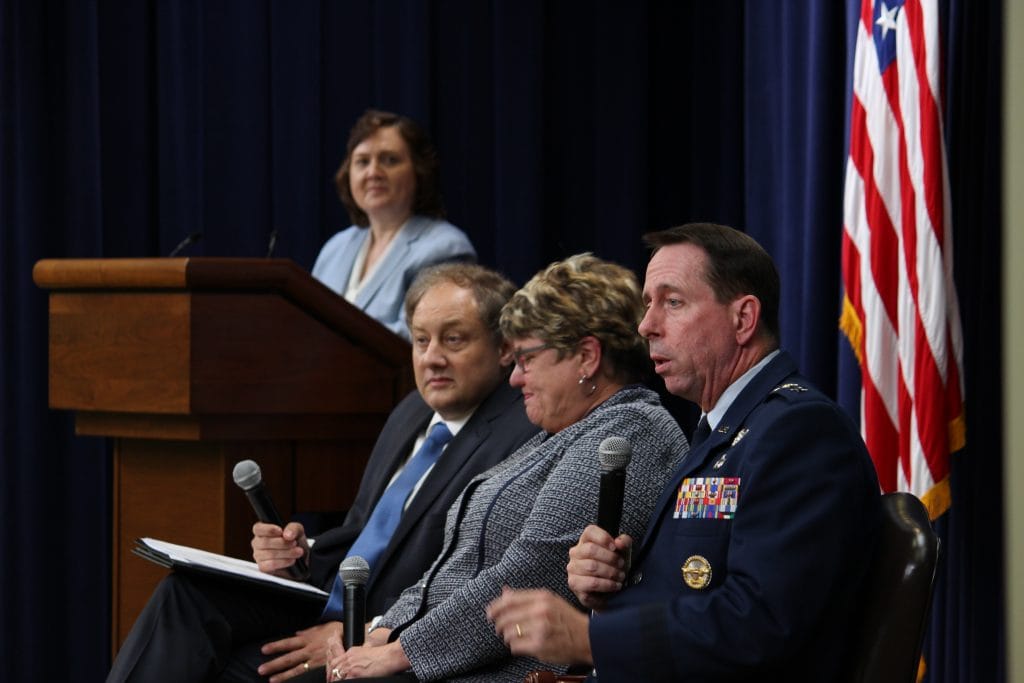Trump Signs Executive Order on Artificial Intelligence, How Not to Wreck the FCC, Broadband Performance in Europe
On Thursday, President Donald Trump signed an executive order aiming to guide how federal agencies adopt artificial intelligence, as part of an ongoing effort to build public trust in government use of AI. The order includes four important actions by the Trump Administration. The order itself direct
Jericho Casper

On Thursday, President Donald Trump signed an executive order aiming to guide how federal agencies adopt artificial intelligence, as part of an ongoing effort to build public trust in government use of AI.
The order includes four important actions by the Trump Administration. The order itself directs federal agencies to be guided by nine principles when designing, developing, and using AI. These principles emphasize that AI use by federal agencies be lawful, purposeful and performance-driven, responsible and traceable, regularly monitored, and transparent.
The order also aims to establish a process for implementing these principles through common policy guidance across agencies, by directing the Office of Management and Budget to create a roadmap by the end of May 2021 for how the government will better support the use of AI.
This roadmap will include a schedule for engaging with the public and timelines for finalizing relevant policy guidance.
Thirdly, the order directs each federal agency to prepare an inventory of AI use cases by the agency, and review and assess these use cases for consistency with the order.
Finally, the executive order directs the General Services Administration to establish an AI track within the Presidential Innovation Fellows program to attract experts from industry and academia to work within agencies to further the design, development, acquisition, and use of AI in government.
“This order recognizes the potential for AI to improve government operations, such as by reducing outdated or duplicative regulations, enhancing the security of federal information systems, and streamlining application processes,” said Trump in a statement.
“It also directs agencies to ensure that the design, development, acquisition, and use of AI is done in a manner that protects privacy, civil rights, civil liberties, and American values.”
During Trump’s time in the White House, he has issued various initiatives on AI, with the most recent one, excluding the newest executive order, being a guidance on how to regulate AI applications that are produced in the US. Trump also signed a separate executive order almost two years ago, which was created with the intent of fast-tracking the development and regulation of artificial intelligence in the United States.
One broadband industry expert’s regulatory wish list for the incoming Biden FCC
The upcoming Presidential transition has many broadband industry experts wondering what the shift will mean for telecommunications policy, as a change in administration will bring along with it a change at the FCC, with the agency’s majority swinging from Republican to Democratic.
The approaching transition has many telecom enthusiasts, such as Doug Dawson, president of CCG Consulting, airing their regulatory wish lists. Dawson listed what he hopes the public will see out of the new FCC in his most recent POTs and PANs blog post.
Among other recommendations, Dawson urges the new FCC to keep politics out. He references talk of the new Congress refusing to seat a new Chairman and a fifth commissioner in an attempt to thwart any attempt to re-regulate broadband. “A partisan FCC with no voting majority is going to accomplish very little and will deadlock on most issues,” says Dawson, noting that it would be a disaster for the industry.
He further urges the Biden FCC to say no to big internet service providers. “The current FCC approved everything on the big ISP’s regulatory wish lists,” he writes. “The role of a regulator is to strike a balance between the companies it regulates and the public – we need to get back to a balance between those two interests.”
Dawson further urges the incoming FCC to drop 5G rhetoric. The FCC has no business pushing 5G as the solution to everything, writes Dawson. “The FCC is supposed to be a neutral regulator and has no business supporting 5G over other technologies. The cellular companies behind 5G are extremely well-funded and we should let 5G play out as the market sees fit.”
Finally, Dawson calls for the Biden FCC to bring broadband regulation back, following the Trump FCC’s attempt to gut the agency’s ability to regulate broadband. “The FCC currently can’t even scold big ISPs for abusing customers,” says Dawson, adding that “one of the most important industries in the country needs a cop at the top to protect citizens against monopoly abuses.”
Europe vs. U.S. broadband performance annual report
American internet users had a speedy 2020. According to research performed by Fair Internet Report, median U.S. internet speeds in 2020 doubled to 33.16 Megabytes per second, up from 17.34 Mbps in 2019.
Covering the five years of 2016, 2017, 2018, 2019, and 2020, this is the largest speed increase seen in the U.S., with speeds staying essentially the same between 2016 and 2017, at 8.91 Mbps and 9.08 Mbps respectively, and 2018 recording a median speed of 12.83 Mbps.
Average US broadband speeds overtook western European Union countries like the United Kingdom, France, and Germany for the first time in 5 years, although U.S. speeds still lag behind some of the most covered European nations, including Denmark, Sweden, Switzerland, and the Netherlands.
This year’s internet speed test data showed an interesting correlation between population and broadband speeds. A chart comparing a country’s population against the median download speed experienced by its users, revealed an emerging pattern. According to FIR, the data implies that if you live in a country with a small population, you are vastly more likely to experience faster internet speeds.
FIR generated this custom dataset using NDT5 and NDT7 speed test datasets from Measurement Lab covering the years 2016 to 2020.









Member discussion